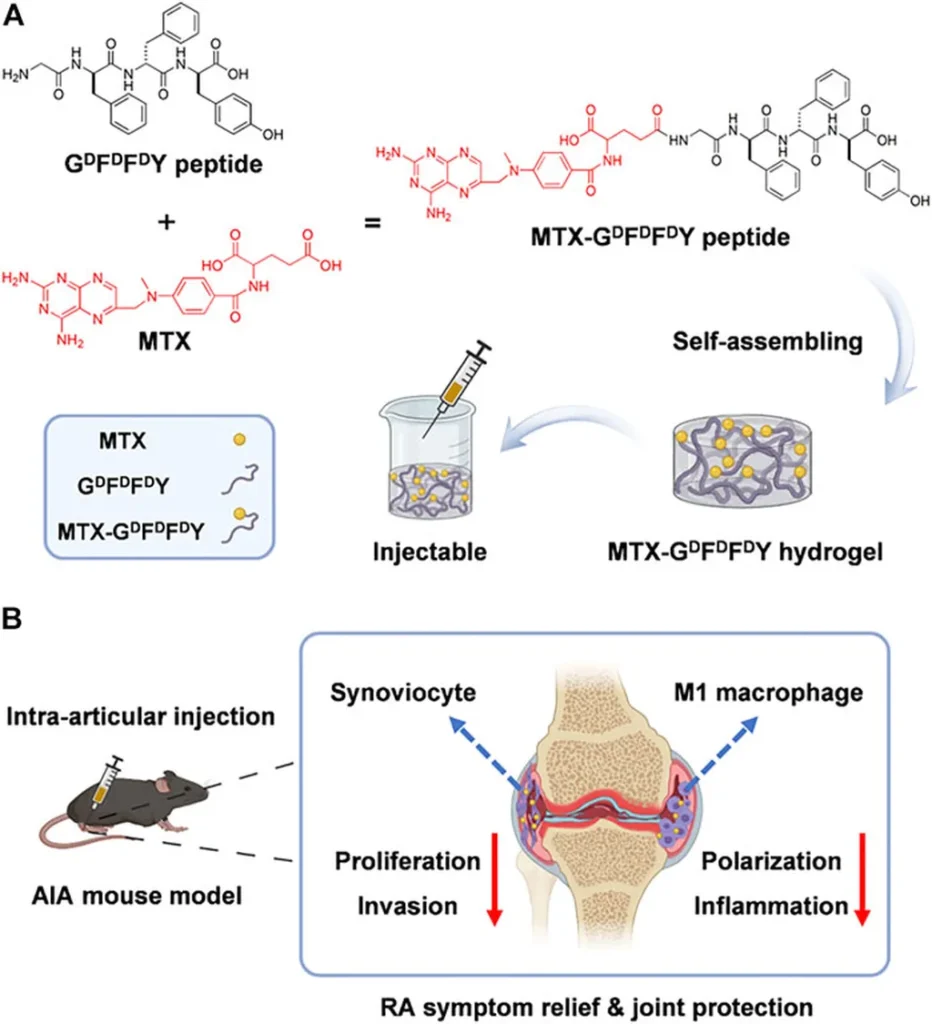In the quest to improve treatments for rheumatoid arthritis (RA), a team of researchers led by Dr. Hao Li from the Department of Joint Surgery at The First Affiliated Hospital of Sun Yat-sen University in Guangzhou, China, has developed a groundbreaking supramolecular hydrogel that could revolutionize drug delivery for this debilitating condition. Published in the journal *Bioactive Materials* (which translates to *Bioactive Materials* in English), this innovative approach leverages the unique properties of cyanuric acid (CYA) to create a hydrogel capable of delivering both drugs and therapeutic ions directly to inflamed joints.
Rheumatoid arthritis affects millions worldwide, causing chronic joint inflammation and bone destruction. Current treatments often fall short due to the limited solubility of drugs like methotrexate (MTX) and the challenges of delivering osteoinductive ions such as magnesium ions (Mg2+) in a controlled manner. Dr. Li’s team addressed these issues by capitalizing on the pH-induced keto-enol tautomerization of CYA, which enhances supramolecular interactions within the hydrogel.
“The hydrogel we’ve developed, Gel-MTX/Mg, is designed to respond to the pathological pH levels found in RA joints,” Dr. Li explained. “This pH responsiveness triggers the on-demand release of MTX and Mg2+, which not only reduces inflammation but also promotes bone remodeling.”
The hydrogel’s dual-action mechanism is particularly noteworthy. By releasing MTX and Mg2+ in a controlled manner, it induces anti-inflammatory M2 macrophage polarization, inhibits osteoclast differentiation, and enhances osteoblastic differentiation. RNA sequencing results further revealed that the hydrogel promotes signaling pathways related to anti-inflammatory and bone-remodeling activities, offering a comprehensive approach to RA treatment.
In animal studies, a single intra-articular administration of Gel-MTX/Mg significantly suppressed inflammation symptoms and protected bone and cartilage in a rat model. This suggests that the hydrogel could offer a more effective and sustained treatment option for RA patients, potentially reducing the need for frequent injections or oral medications.
The implications of this research extend beyond rheumatoid arthritis. The supramolecular hydrogel’s ability to deliver both drugs and therapeutic ions in response to pathological conditions opens up new possibilities for treating other inflammatory and bone-degenerative diseases. “This technology has the potential to transform how we approach chronic inflammatory conditions,” Dr. Li noted. “By tailoring the hydrogel to specific pathological environments, we can create targeted therapies that are both effective and minimally invasive.”
As the construction industry increasingly integrates advanced materials and technologies, the development of such innovative drug delivery systems could also have commercial impacts. For instance, the principles behind this hydrogel could inspire new materials for wound healing or infection control in construction-related injuries, or even in the development of smart materials that respond to environmental changes.
The research published in *Bioactive Materials* represents a significant step forward in the field of drug delivery and regenerative medicine. By harnessing the power of supramolecular chemistry and pH-responsive materials, Dr. Li and his team have created a platform that could reshape the future of treatments for rheumatoid arthritis and beyond. As the construction industry continues to evolve, the lessons learned from this research could inspire new applications and innovations, ultimately benefiting both patients and the broader healthcare landscape.

